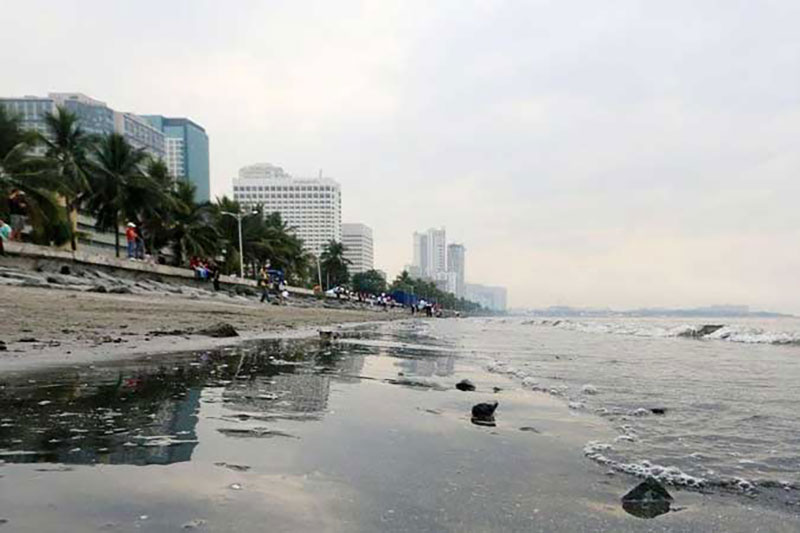US flags blacklisted Chinese firm in Manila Bay reclamation projects

By Kyle Aristophere T. Atienza, Reporter
THE US EMBASSY in Manila has expressed concern about the environmental impacts of reclamation projects in Manila Bay and the involvement of a Chinese company that had been blacklisted by Washington.
“We have expressed concerns about the potential negative long-term and irreversible impacts on the environment, the resilience to natural hazards of Manila and nearby areas and on commerce,” embassy spokesman Kanishka Gangopadhyay said in a statement on Wednesday.
The Chinese Embassy in Manila did not immediately reply to a Viber message seeking comment.
Philippine environmentalists and scientists as well as fisherfolk have been opposing the reclamation projects, citing threats to marine ecosystems such as mangroves and wetlands and the displacement of coastal communities.
There are 22 reclamation projects in the bay, which are bounded by Metro Manila and the provinces of Bataan, Pampanga, Bulacan in central Luzon and Cavite in Southern Tagalog.
Permits for the projects were completed from 2019 to 2021 under the administration of former President Rodrigo R. Duterte, who led a foreign policy pivot to China in exchange for investment pledges, few of which had materialized.
The US Embassy also raised concerns about the projects’ ties to China Communications Construction Co., “which has been added to the US Department of Commerce’s entity list for its role in helping the Chinese military construct and militarize artificial islands in the South China Sea.”
It said the company, which is controlled by the Chinese government, has also been cited by the World Bank and Asian Development Bank for engaging in fraudulent business practices.
“We continue to support high-quality, sustainable and transparent investments to benefit the Filipino people and will continue to engage with the appropriate authorities on this matter.”
The embassy said it is in regular discussions with the Philippine government regarding the reclamation projects.
Earlier in the day, Environment Secretary Maria Antonia Yulo-Loyzaga said geological hazards should be considered in assessing the reclamation projects in Manila Bay.
She said the project proponents had failed to include the possible impacts of the movement of the Manila Trench, an oceanic trench in the Pacific Ocean located west of the islands of Luzon and Mindoro.
“It is in Manila Bay,” Ms. Loyzaga told a news briefing. “That is the geological event we are looking at in terms of generation of a potential tsunami. I haven’t seen this in the studies submitted by the proponents.”
The Environment chief said the reclamation projects might also hinder relief and rescue efforts should a 7.2-magnitude earthquake dubbed as the “Big One” hit Metro Manila.
“The Big One actually has a situation wherein Metro Manila will be separated into four segments — the coastal areas facing Manila Bay will be among those that will be affected,” she said. “Rescue and relief operations were meant to come by air and by sea. So reclamation projects could possibly have an impact on that plan.”
Ms. Loyzaga said the rising sea level should likewise be considered in assessing the projects.
“All of these need to be taken into consideration in terms of scenarios for reclamation, as well as the subsidence that is ongoing because of the extraction of groundwater from the coastal areas of Manila Bay.”
Citing its study on the rising sea level, Greenpeace Philippines in 2022 said as much as 80% of Manila, the Philippine capital, could be submerged by 2030.
Ms. Loyzaga said her agency has yet to conduct a cumulative impact assessment of the reclamation projects.
The Environment department is tapping various scientists and engineers, including physical and chemical oceanographers, fishery experts and marine biologists.
“We need certain types of engineers in terms of the evaluation of the potential infrastructure that will be introduced,” she said. “The composition of the cumulative impact assessment team would not be easy.”
She said reclamation has economic value. “However, we need to do the cost-benefit analysis in terms of impacts on geology and the longer-term impacts in terms of what could result from climate change.”



